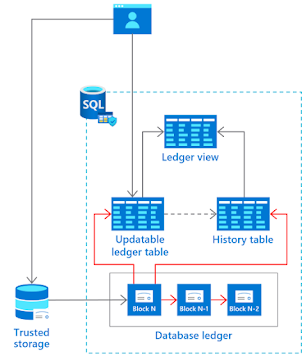Blockchain use cases for Banks
Blockchain is a digital, decentralized, distributed ledger technology that records transactions on multiple computers in a secure and transparent manner. It allows for the secure and transparent transfer of digital assets without the need for intermediaries like banks, government agencies, or other third-party intermediaries.
In a blockchain, transactions are recorded in a block that is linked to the previous block, forming a chain of blocks, hence the name "blockchain". Each block contains a cryptographic hash of the previous block, which ensures that the blockchain is tamper-resistant and secure.
Blockchain technology can be used to create smart contracts, cryptocurrencies, and other applications that require secure, transparent, and decentralized record-keeping. It has the potential to transform various industries by reducing costs, improving efficiency, and increasing security and transparency.
Use cases for Banks
Blockchain technology has several potential use cases in the banking industry due to its unique properties such as decentralization, immutability, and transparency. Some of the most promising use cases of blockchain in banking are:
Payments and Money Transfer: Blockchain technology can be used to facilitate faster and more secure cross-border payments and money transfers, eliminating the need for intermediaries such as correspondent banks and clearing houses.
Digital Identity Management: Blockchain-based identity management systems can help banks verify the identities of their customers more securely and efficiently, reducing the risk of fraud and identity theft.
Trade Finance: Blockchain technology can be used to digitize trade finance processes such as letters of credit, bills of lading, and invoices, improving efficiency and reducing the risk of fraud.
KYC/AML Compliance: Blockchain technology can be used to create a secure and immutable record of customer identity and transaction history, making it easier for banks to comply with Know Your Customer (KYC) and Anti-Money Laundering (AML) regulations.
Asset Management: Blockchain technology can be used to create digital assets that represent traditional assets such as stocks, bonds, and real estate, allowing for more efficient trading and settlement.
Smart Contracts: Blockchain technology can be used to create self-executing smart contracts that automatically enforce the terms of an agreement between parties, reducing the need for intermediaries and improving efficiency.
Overall, the use of blockchain technology in the banking industry has the potential to improve efficiency, reduce costs, and increase transparency and security. However, the implementation of blockchain-based solutions in the banking industry requires careful consideration of several factors such as regulatory compliance, scalability, and interoperability with existing systems.



Comments
Post a Comment